ThingThingThing
2019
Brief
ThingThingThing is a computational environment that facilitates the creation and interaction of digital entities. Developed through collaborative workshops, it allows participants to define entities within certain parameters. Once introduced into the system, these entities exist and interact autonomously, evolving without further direct human intervention.
The visual design of ThingThingThing is characterized by its abstract, geometric aesthetic. The creatures and the environment they inhabit are intentionally non-realistic, highlighting the project’s focus on systemic interactions rather than visual fidelity.
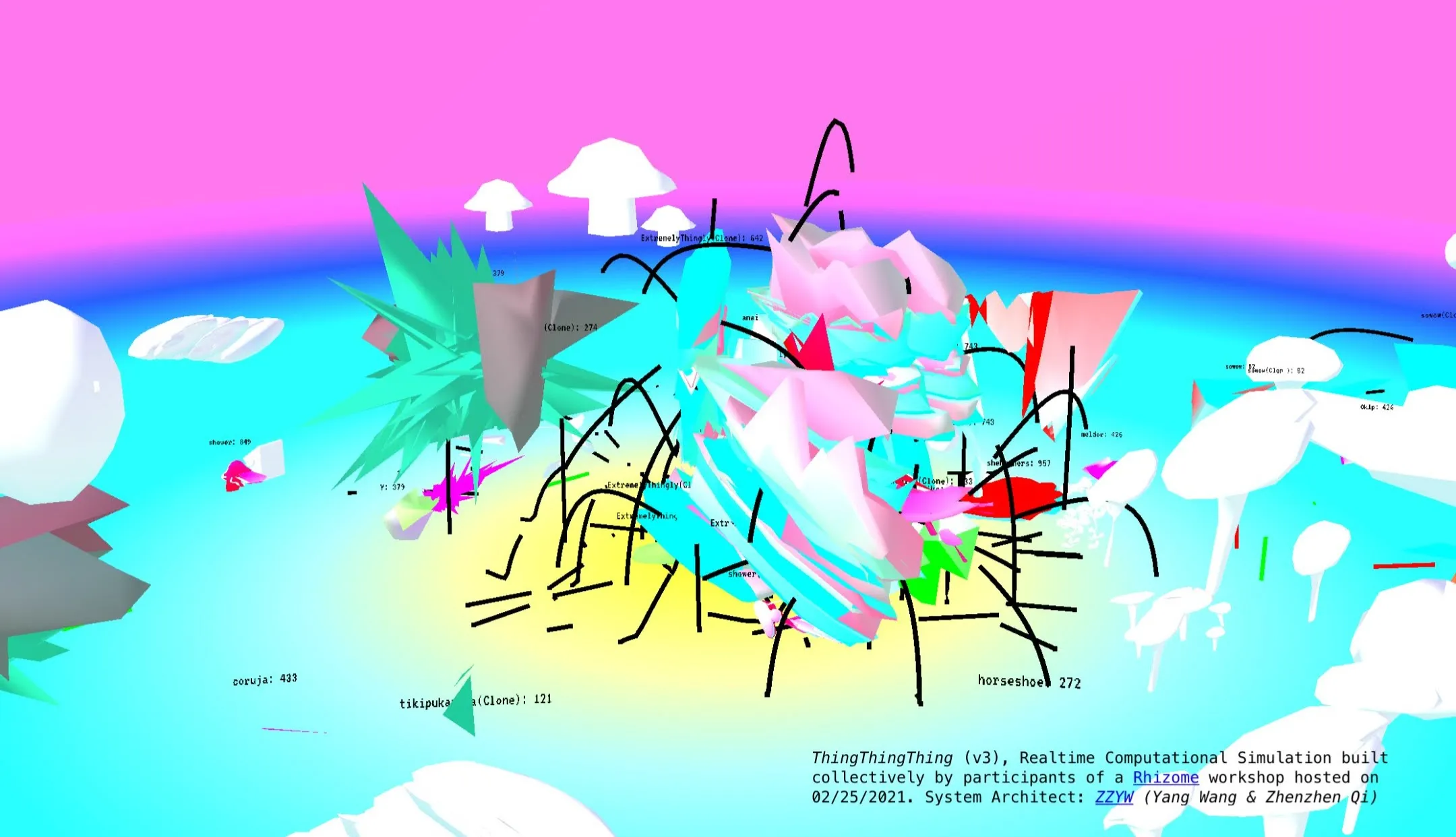
Live Simulation
Technical realization
ThingThingThing utilizes Unity, a video game engine, as its frontend, and Github, an open-source code repository, as its backend on a technical level. The platform incorporates a web-based code editor, enabling users to establish interaction guidelines among creators. Whenever ThingThingThing is showcased, we collaborate with the exhibiting institution to organize a public collaborative world-building workshop, effectively bringing the artwork to life. During these workshops, we provide demonstrations of the interface and offer guidance to participants in crafting rule-based entities. At the workshop’s end, a unique simulation with its own narrative is created and made available online.
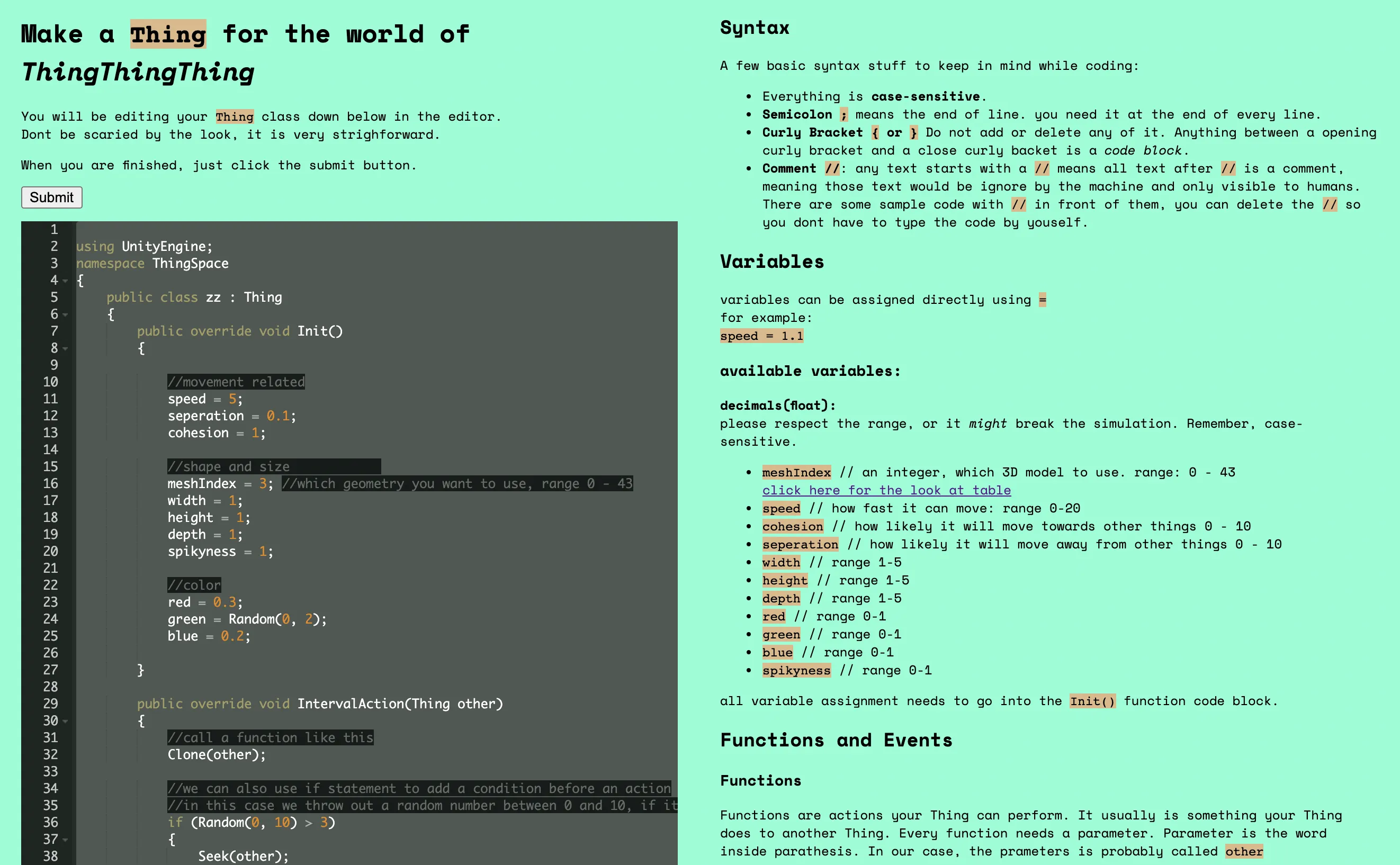
Visit https://thingthingthing.live/input to contribute via thingthingthing web editor.
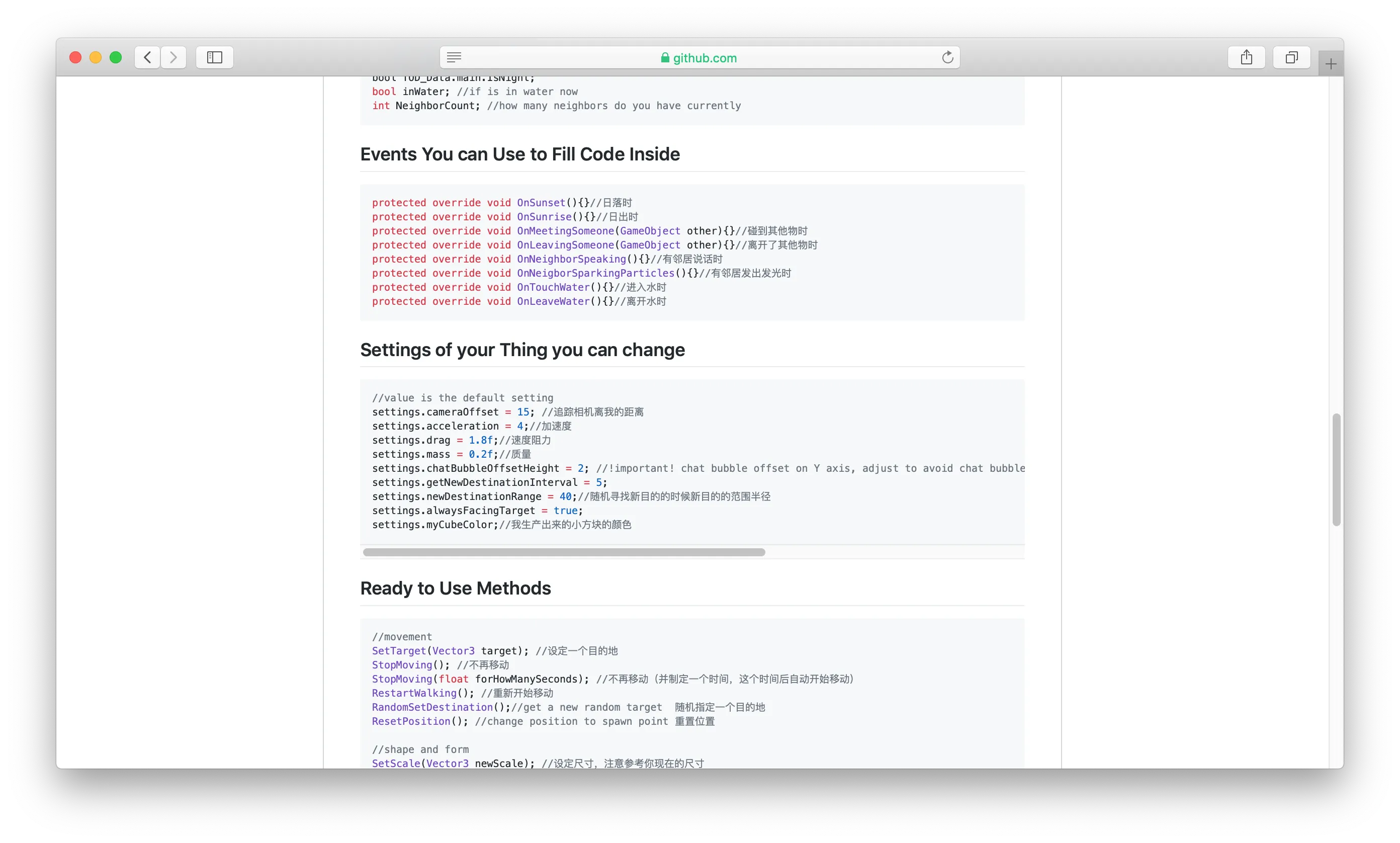
Visit https://github.com/ZZYW/ThingThingThing to contribute via ThingThingThing’s SDK.
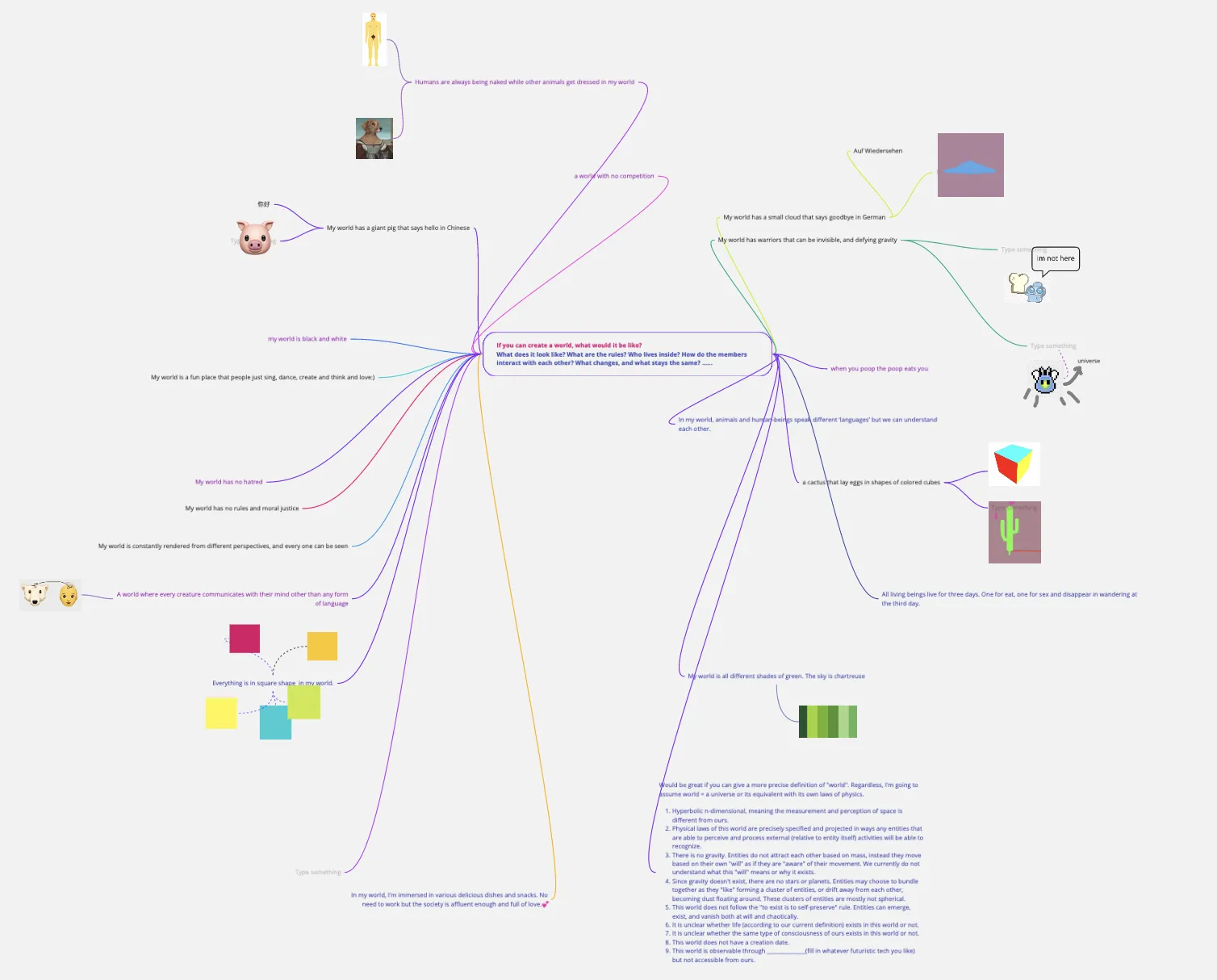
audience contributed mindmap of ThingThingThing
Workshop
We have been hosting a series of workshops with museums and art institutions around the world. The workshop enables everyone from students, artists, designers, architects and technologists to create their own programmed creatures with intelligence. Past collaborators include:
- http://worldonawire.net/, curated by Rhizome of New Museum
- NEW INC, New Museum, New York, NY
- Power Station of Art, Shanghai, China
- Macy Art Gallery, Teachers College, Columbia University, New York, NY
- City University of New York (CUNY), New York, NY
- Guangzhou Academy of Art (GAFA), Guangzhou, China
- Creative Tech Week (CTW), New York, NY
- Asia Art Archive in America (AAA-A), Brooklyn, NY
- Power Station of Art (PSA), Shanghai, China.
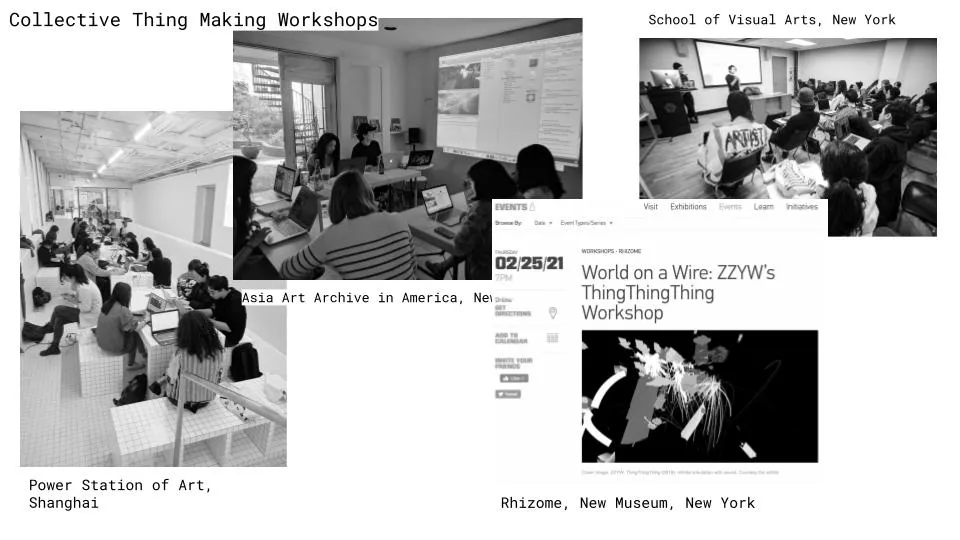
Record
Exhibitions
- 1/2024 - 4/2024 - - Apparatus Less Experiment 无设备实验, - 数知妙悟 & 四川美术学院实验艺术学院, China, Chongqing Curated by Iris Long 龙星如 & Qin Yueshi 秦越石
- 3/2023 - 4/2023 - - Glitches in Love: A New Formula, - Tokyo University of the Arts, Japan, Tokyo
- 2/2021 - - World On A Wire, - Rhizome of New Museum @ https://worldonawire.net/, Curated by Michael Connor, Baoyang Chen
- 11/2019 - 12/2019 - - As-Helix, - National Museum of China 中国国家博物馆, China, Beijing
- 11/2018 - 3/2019 - - Bad Code, - Power Station of Art 上海当代艺术博物馆, China, Shanghai Curated by Xinyi Ren, Ningjue Lv, Jingqiu Li
- 6/2018 - - On Collaboration, - Macy Art Gallery, Teachers College, Columbia University, US, New York, NY